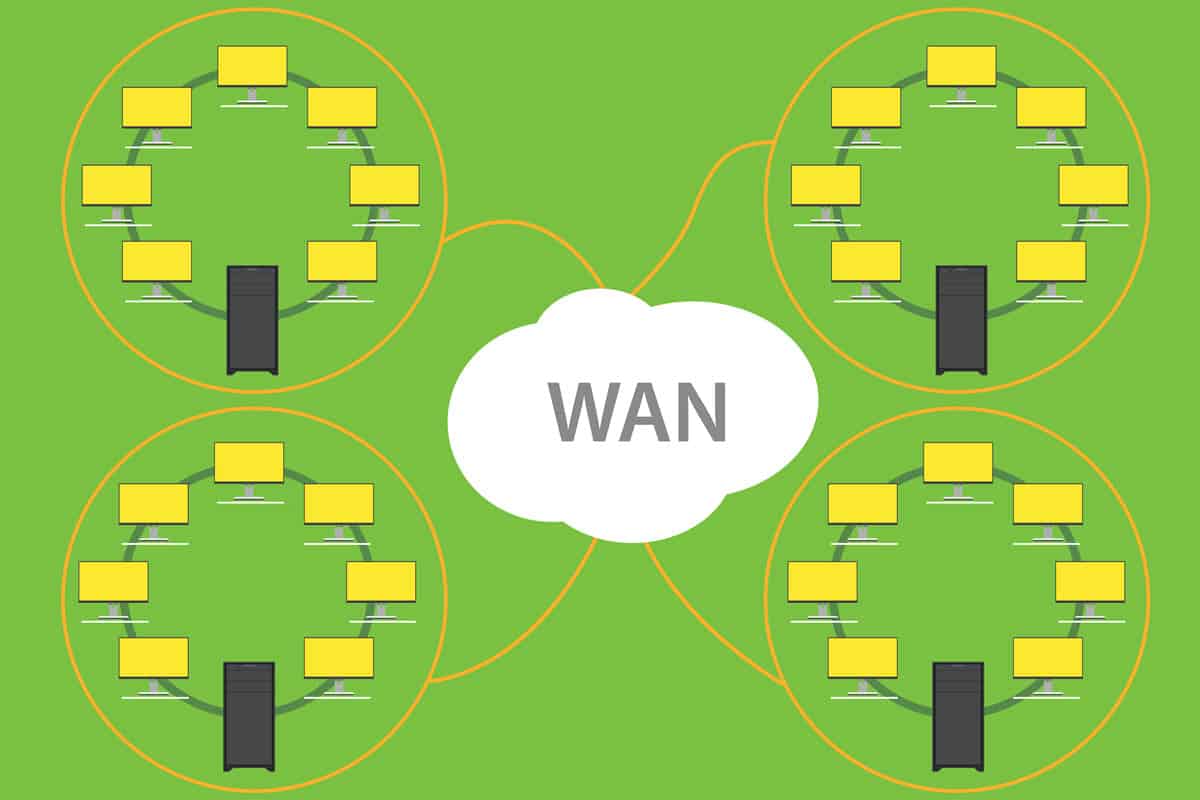Will SD-WAN Be Right for Your Business in 2022?

Estimated reading time: 6 minutes
Table of contents
If you like to stay up to date on all the latest networking tech, then you’ll most likely be aware of SD-WAN – otherwise known as Software-Defined Wide Area Network. But even if you’ve heard of it, you might not quite understand what the acronym means, or what implementing this tech could do for your company.
Unfortunately, while there’s a lot of great information out there explaining exactly what SD-WAN can do, there’s also plenty that isn’t entirely accurate. In this article, we’ll cut through the noise and tell you exactly what SD-WAN can (and can’t) do for your business.
What Is SD-WAN?
It’s tough to get to grips with SD-WAN until you understand the letters that make up the acronym – let’s start with Wide Area Network. In short, a WAN is a series of devices over a location of any size, from down the road to across the planet – in fact, the internet is actually just a massive WAN.
You probably have a WAN in your business where all of your main infrastructure devices and servers are stored, functioning as a kind of a central hub. The locations that are within this WAN will then usually be part of their own LAN or Local Area Network, which can then link to the WAN when connected over the internet.
You can then access the centrally stored provisions across the whole of the WAN, meaning that storage, software, and other various systems can be made near-universally accessible.
SEE ALSO: The Factors Affecting Sales Forecasts
What Could I Gain From Using SD-WAN?
SD-WAN doesn’t exist as an entirely different entity. Rather, it functions as an overlay to go on top of your existing WAN, allowing you to access a broader range of control options from a piece of software compatible with all of your network devices. As these controls are accessible from any point on your business network, you can use them instead of relying on controls that are usually only accessed physically.
This means that your IT team won’t have to move between locations to tweak the settings of your devices. But aside from reducing the travel bill of your IT department, you might still be unsure about what SD-WAN or SASE (SD-WAN with a greater security focus) can do for your business. Let’s go over some of the most commonly made claims and separate the facts from the fiction…
SD-WAN Lets You Expand Instantly to New Sites
It’s probably fair to say that the least favorite part of getting a new site up and running for lots of business owners is dealing with getting your devices online. While SD-WAN can certainly streamline this process for you, there are still a few limits.
For example, SD-WAN isn’t actually an integrated part of your network infrastructure hardware-wise, and instead just exists as an overlay – this means that if there’s no hardware in place at the location, your SD-WAN system won’t have anything to work with. If you can get this hardware in place, SD-WAN can help, but without this connection, you can’t really get very far.
SD-WAN Helps You Manage Traffic Priority and Bandwidth
One frequent claim from providers of SD-WAN solutions is that this tech allows for a much-improved quality of service when compared to other, older methods of WAN management. But this might be less based on truth, and more based on marketing tactics!
Although SD-WAN could assist in improving your quality of service, it’s more than possible that much simpler alterations can be made without implementing any new technologies. You may actually find that it’s more effective (and cost-effective) to spend some time improving your current network before you add anything else into the mix. While SD-WAN can be extremely useful, you tend to find that the best changes are those made at a hardware level.
SD-WAN Can Assist With SaaS Applications
If your business depends upon SaaS (or Software as a Service) applications, then you’ll probably find SD-WAN helpful, as it gives you a central location from which all of your satellite operations can access the same app with the priority and speed assigned to the data. If these applications are considered mission-critical, and poor performance can lead to a bad customer experience, this is particularly important.
As SD-WAN allows you to stay on top of networking issues without the need for someone to get hands-on with the device, you can ensure that vital applications stay online when it matters most. Of course, if you don’t depend heavily on certain apps, this might not be important to you – on the other hand, if you do, it could save you from some serious downtime costs.
SEE ALSO: 6 Apps That Could Be Dangerous For Your Kids
You Can Use SD-WAN Instead Of MPLS
This is maybe the most exciting claim of all – lots of business owners are hoping to hear that SD-WAN can completely knock out the need for the costly MPLS systems propping up many business networks. MPLS, or Multi-Protocol Label Switching, is a data-carrying technique used in the most high-performance networks that function to reroute data dynamically along the best possible path in a network.
This allows high-priority data to reach its destination as quickly as possible, keeping mission-critical applications running smoothly even during times of heavy traffic. You may know that SD-WAN provides a similar service through CoS (or Class of Service) settings, that let you prioritize data traffic. Unfortunately, this is nowhere near the level that MPLS can provide – while SD-WAN is just an overlay that can only change so much within the network, MPLS is integrated into the actual network, and offers much more control.
This means that, while SD-WAN might one day catch up to the abilities of other networking solutions, MPLS still reigns supreme for now.
Should I Invest in SD-WAN?
As a business owner, you know that no two businesses are exactly alike, and your IT needs are no different. While SD-WAN might be perfect for one business, fitting their needs to a T, it could be practically useless for another.
It’s important to do some more of your own research if you’re seriously considering SD-WAN for your business network, and talking this decision through with your IT team and senior staff is a must. Also, if you’re already working with a reliable MSP, who stays on top of your network issues as they arise, you may not find too many benefits from this.
On the other hand, if you have an overworked IT team who are sick of traveling back and forth, SD-WAN could be the answer.








